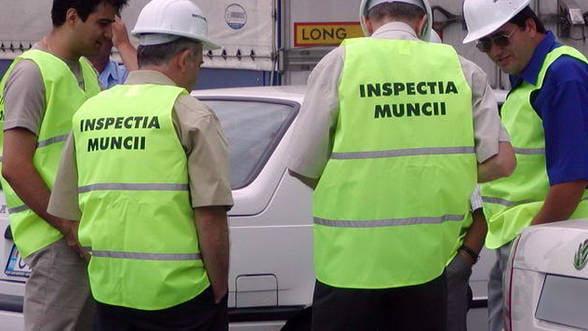Emergencies usually happen when you least expect it. Where you are or when such an event occurs is irrelevant, as it can occur anywhere and anytime.
The consequences that such an event can have can be quite serious, even affecting people’s lives and safety.
That is why the management of emergency situations is crucial both in society and especially within companies, which can have quite a number of employees consistent.
Education and training of staff can be decisive factors when it comes to how to act in the event of an unexpected event, appropriate preparation can even save situations and lives.
What does an emergency situation mean?
An emergency situation refers to an event of a random, unexpected nature, which, through its consequences, can endanger people and/or the environment surrounding, and the intervention of specialized bodies is necessary to restore normality.
The causes of an emergency situation can be natural (earthquakes, floods) or they can be the consequence of human action (accidents, attacks).
Classification of emergencies by magnitude
- Minor emergencies, a category that includes situations that can be easily managed and that do not endanger life;
- Moderate emergencies, which include events that require more thorough involvement, but are not considered an immediate danger to life;
- Major emergencies, represented by events that represent an immediate danger to life and require the rapid intervention of emergency services.
Classification of emergencies by scale of distribution
- Local emergency situations, where the event occurs punctually, in a specific place, such as an explosion in a factory, allowing management by local specialized bodies;
- Regional emergencies, which affect a certain region or a larger city and require coordination by regional and even local authorities. An example would be a strong storm or an earthquake;
- National emergency situations, which occur at the country level (such as a terrorist attack) and require the involvement of the government and access to considerable resources;
- International emergency situations, occurring at the level of several countries or even throughout the world (such as, for example, a pandemic or a global catastrophe), requiring both the involvement of each individual country and international organizations
Classification of emergency situations according to the rate of propagation
The rate of propagation of an emergency situation indicates the speed and intensity with which it occurs, and its establishment is important in order to manage such an event.
There are emergency situations with a slow propagation rate, which evolve quite slowly and to manage them and reduce the impact they could have on society, they require planning in the long term.
Another type of emergency situation is the one with a fast propagation rate, which evolves at the same rate and requires immediate intervention to limit the consequences produced by it. An example could be a fire or an explosion.
The last category in which we can place an emergency situation when we talk about its rate of propagation is the one with a mixed rate of propagation, which can generate both long-term effects and and immediate damage. That is why it is necessary to consider both immediate and long-term needs.
Classification of emergencies by origin
When we talk about the origin of an emergency, there are the following categories:
- Natural emergency situations, the cause of which is represented by natural phenomena, such as floods, earthquakes or storms;
- Emergencies caused by human error, which consist of situations created by human actions, such as fires, accidents, spontaneous building collapses, and the examples go on.
What are the specialized services in case of emergency?
General Inspectorate for Emergency Situations
The General Inspectorate for Emergency Situations or ISGSU is a state institution responsible for managing emergency situations.
Among the roles he has, are:
- Preventing the occurrence of emergency situations through efforts to educate the population in order to limit the risks that can generate such events;
- Immediate intervention in case of emergency through specific actions and providing the necessary support;
- Permanent assessment of possible risks that can produce emergency situations, planning strategies to limit them and effective management in case of their occurrence;
- Preoccupation with the training and development of specialists in the field through training and preparation courses;
- International relations with other institutions specialized in emergency situations with the aim of exchanging information for the good management of unexpected events.
Police and Gendarmerie
Just like the ISGSU, the Police and the Gendarmerie are two state structures, subordinate to the Ministry of Internal Affairs, which basically have the same purpose: ensuring protection and public order and combating crimes.
The police, through its specific actions (street patrolling and quick intervention when necessary, permanent evaluation and monitoring of crime-prone areas and the creation of programs to prevent them, the arrest of criminals identified following investigations and the collection of evidence, etc.), has the role of ensuring security and public order, preventing crimes and also combating them.
Also, the Gendarmerie contributes to maintaining public order by assisting various public events that may risk being dangerous, such as protests and demonstrations, implicitly also participating in the promotion of civic spirit, preventing, managing and combating criminality.
National Emergency Medical Assistance System
S.N.A.M.U. is an emergency medical assistance system, coordinated by the Ministry of Health, which aims to provide immediate intervention in case of emergency through:
- ensuring specific medical care at the scene of the incident by crews trained in this regard;
- subsequent transport to specialized medical units and implicitly the provision of care during the journey.
Other public or community services
Besides the listed services, other categories that can contribute in case of emergency are:
- Lifeguards, who deal with the prevention and combating of accidents and whose objective is emergency intervention in the case of people in this danger;
- Rescuers, who are responsible for preventing and combating mountain accidents;
- NGOs (non-governmental organizations), such as Cruz Roja (Red Cross) and Medecins Sans Frontieres (Doctors without Borders), which can provide medical assistance services and various resources in case of emergency; > – The Voluntary Service for Emergency Situations (SVSU), a system under the coordination of the Inspectorate for Emergency Situations, which offers the opportunity to citizens from any field of activity to get involved in preventing and combating situations of this kind.
How can emergency situations be prevented in factories and companies?
Emergency audit
It is the first step in anticipating and/or preventing an emergency situation. It can be carried out by an emergency situation inspector and consists of identifying the risks associated with each activity, evaluating the measures to prevent and manage a possible event, collecting all the necessary data and information in order to pinpoint what needs improvement, so that a company to be able to manage the occurrence of an emergency situation.
Emergency Training
It is a process that consists in preparing employees for a possible accidental event that could occur during the performance of the work activity and has the following objectives:
- Identification of possible situations that could arise in the case of the company (for example, fires, explosions, etc.);
- Staff training in providing first aid in case of need
- Explanation of evacuation and/or shelter possibilities;
- Presentation of the way in which they can warn of an emergency situation (through alarms, verbally or with the help of sirens);
- Training in the use of protective equipment.
To ensure that a company is prepared in the event of such a situation, employers must comply with emergency rules.
Creating an emergency evacuation plan
When an event occurs that can endanger life and health, establishing an evacuation plan is extremely important.
Its steps should include:
- Establishing all existing exits that could be used in an emergency;
- Planning escape routes, so that, regardless of where a person is, they know which way to go to get to the nearest exit;
- Training all employees in the use of the fire alarm system, fire extinguishers and other such protective equipment;
- Choosing a meeting place where all employees can gather safely;
- The plan should be practiced through simulations to ensure that everyone understood it and continuously adapt it according to the situations that arise.
How can one obtain an individual instruction sheet in the field of emergency situations?
The individual training sheet in the field of emergency situations is a document that certifies the fact that a person has been trained in order to prevent and manage an emergency situation.
It contains data of the person in question, it is obtained following the training and should be updated regularly.
Emergency situations represent a danger to life, so they must be taken seriously, anticipated, prevented and combated, in order to function well, both at the level of the company and of the entire society.



